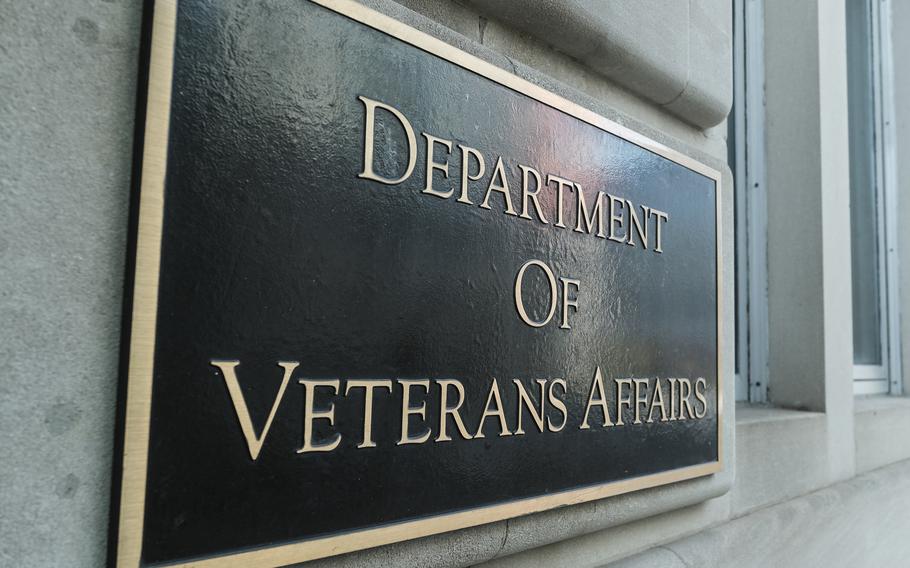
The Department of Veterans Affairs Headquarters on Nov. 24, 2024 in Washington. (Michael A. McCoy/For The Washington Post)
The independent watchdog for the Department of Veterans Affairs said the department’s health system is facing a severe staffing shortage of clinical and nonclinical workers that has worsened since last year — at the same time the department has shed tens of thousands of workers and recruited fewer medical workers.
The inspector general’s office released its annual report Tuesday, revealing the extent of staffing shortages that have plagued the department for years and have worsened this year. All of the Veterans Health Administration’s 139 medical center campuses reported lacking workers, and reports of severe shortages in various occupations increased 50% from the previous fiscal year.
However, the survey of the medical centers, which was completed in April, did not fully capture the extent to which the Trump administration has reduced VA’s workforce. Many of the workers who took the latest buyout offer left after the survey was completed.
Veterans Affairs Secretary Douglas A. Collins has argued the department, the second largest in government, is bloated and inefficient and needs further staffing cuts. He initially pushed to slash the workforce by 15%, though he later backtracked on those plans. At the same time, he has acknowledged the department needs more medical staff members and blamed a nationwide shortage of health care workers.
“We are the same as every other health care system,” Collins said in a May hearing for the Senate Veterans’ Affairs Committee. “We are struggling to recruit doctors, nurses and others just as anybody else.”
In response to the report, VA press secretary Peter Kasperowicz said the findings aren’t a reliable indicator of staffing shortages because the “report simply lists occupations facilities feel are difficult for which to recruit and retain, so the results are completely subjective, not standardized and unreliable.”
Kasperowicz said the department-wide vacancy rates for doctors and nurses are 14% and 10%, respectively. Rep. Mark Takano (California), the ranking Democrat on the House Veterans’ Affairs Committee, said in a statement that the report “confirms our fears” and criticized Collins.
“Instead of making VA an employer of choice, Secretary Collins continues to vilify the VA workforce and strip them of their rights,” Takano said in the statement, referring to the news last week that VA is no longer recognizing most workers’ collective bargaining rights. “Now, VA is facing critical staffing shortages across the country, leading to decreased access and choice for veterans. Veterans deserve and have earned better.”
The department, which had about 467,000 employees as of June, is in charge of providing health care to more than 9 million veterans through its medical centers and 1,193 outpatient clinics. In recent years, VA’s budget and workforce have grown significantly — in part to accommodate the Pact Act, which was enacted in 2022 and caused disability claims and enrollment in the health care system to surge.
The increase in patients has further strained the existing staff. Another inspector general report from earlier this year found one Virginia facility’s primary care staff described “burnout and fatigue” due to the workload last year.
Department leaders announced plans in March to slash the department’s workforce by up to 83,000 workers, leading to tanking morale within the workforce and backlash from veterans’ groups and lawmakers. Critics of the cuts said it would be impossible to slash that many employees without straining medical services. The department reversed its plans for mass firings in July, announcing instead that it would reduce staffing by nearly 30,000 employees by the end of this fiscal year through retirements, attrition and deferred resignations.
Collins has repeatedly assured lawmakers and VA employees that he will not cull the department’s medical staff. Mission-critical positions were exempt from voluntary buyouts, the department said.
But Veterans Affairs was not immune to staffing reductions earlier this year by the cost-cutting U.S. DOGE Service: The department lost more than 1,600 probationary workers, including Veterans Crisis Line operators who were later brought back.
The inspector general has been surveying staffing in the department for over a decade — and it has repeatedly concluded that medical centers are understaffed in key medical jobs. For instance, last year the watchdog said that 86% of campuses reported severe shortages of medical officers — which includes primary care doctors, psychiatrists and other positions — and 82% reported severe shortages of nurses.
Shortages are self-reported by local VA health care systems across the country and can be caused by several factors. The report doesn’t specify how many of these jobs are open for hiring or the degree to which staffing cuts or influxes of patients contribute to reported shortages.
This year’s report showed a slight improvement in some categories. For instance, while jobs in psychology remained the most frequently reported clinical severe staffing shortage at VA medical center campuses, six fewer facilities reported such shortages. Custodial workers, which campuses most frequently reported that they were lacking last year, were no longer the nonclinical job with the biggest scarcity, replaced by police officers.
However, the report describes how shortages have increased at more medical center campuses. Last year, two campuses identified no severe shortages, while this year each one had such shortages.
Amid this year’s staffing losses, the department has faced a dramatic drop in job applications. Nearly 45% fewer job applications were submitted in May compared with the same month last year, according to the most recently available monthly workforce report. The report accounted for more than 29,000 losses and 14,000 hires so far in the fiscal year. By the same time last year, the department had reported more than 23,000 losses and nearly 39,000 hires.